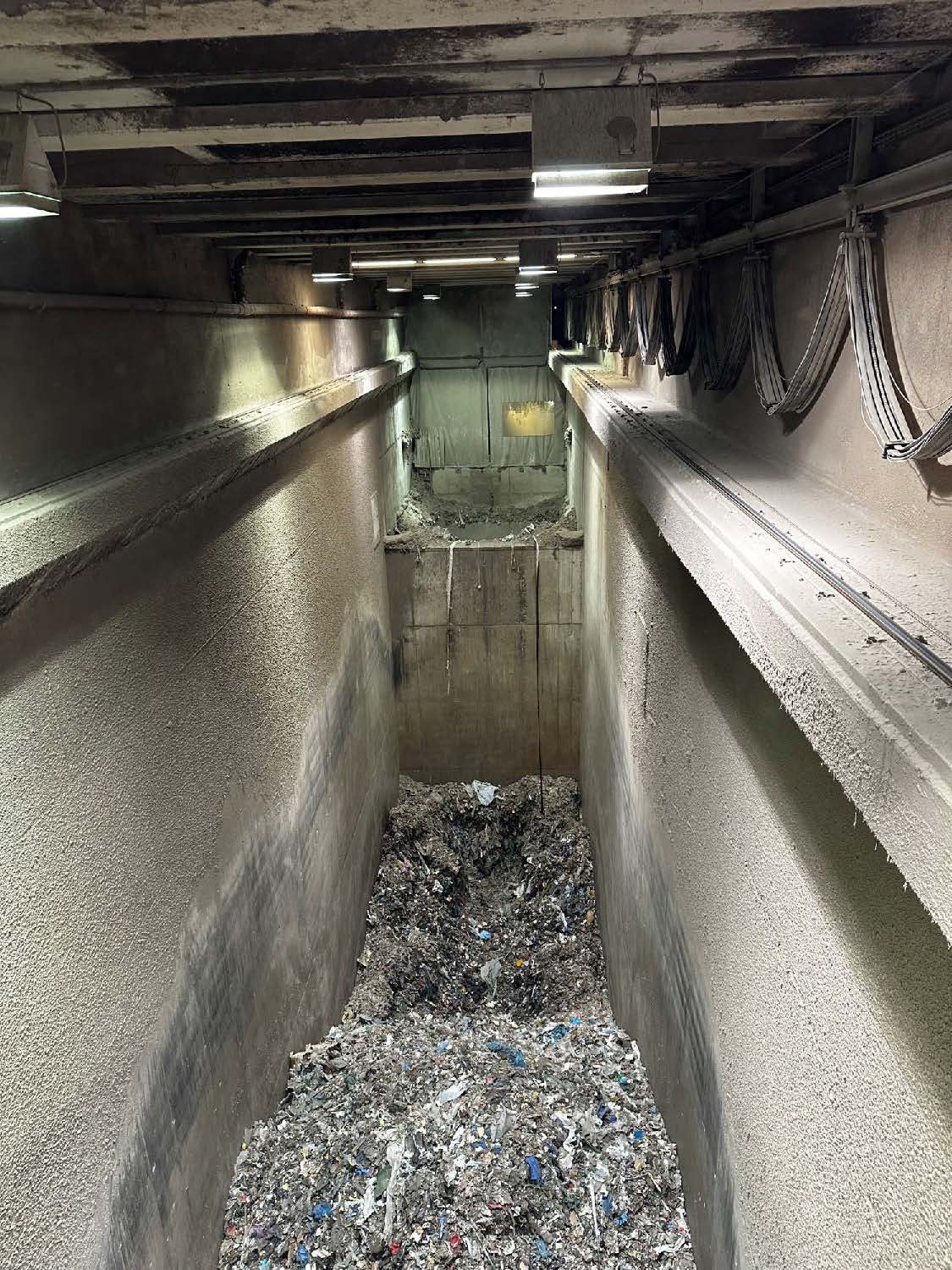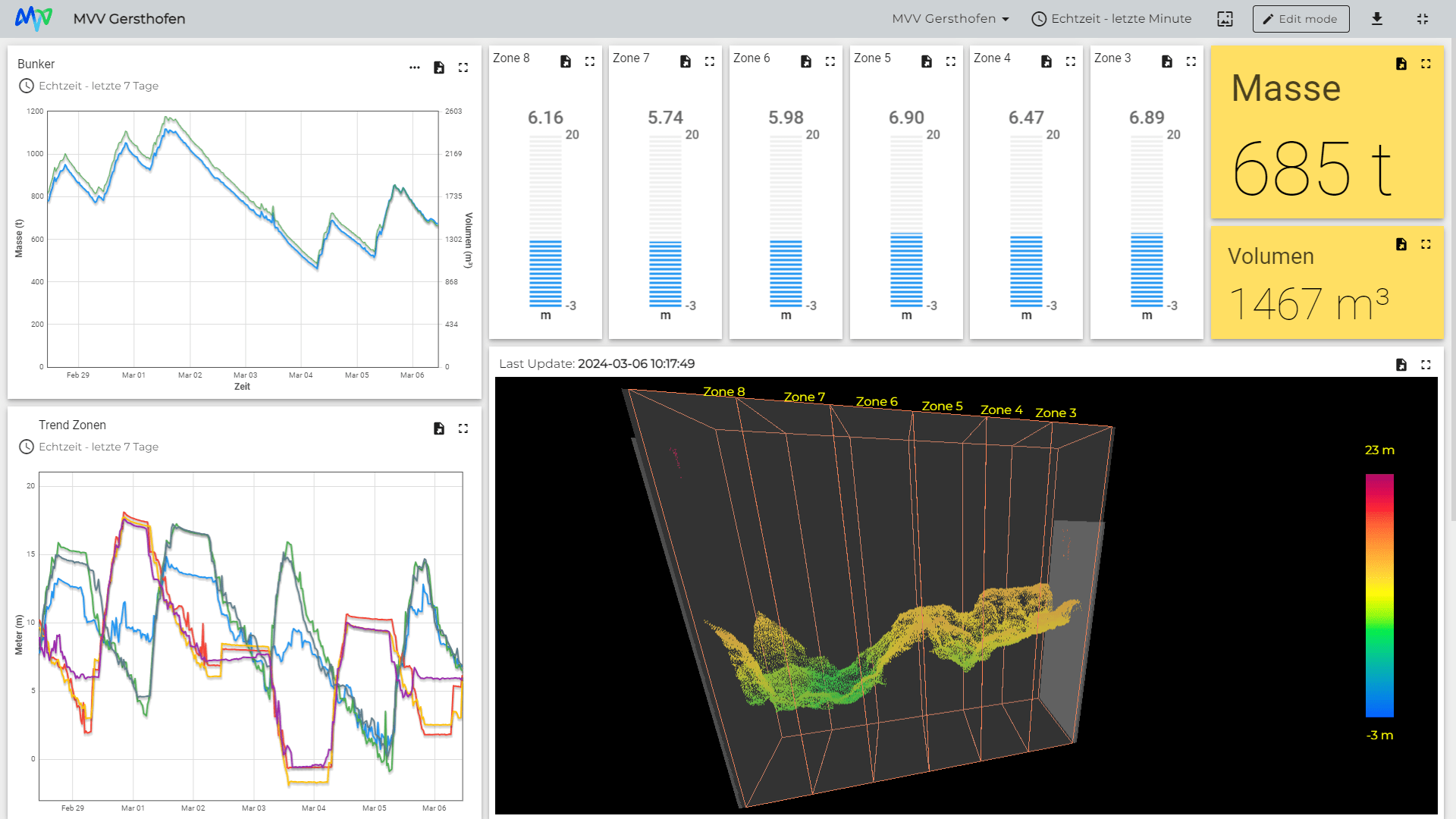In the past, the fill level of the bunker was determined by lowering a waste gripper multiple times, while cameras were used to get a look inside. However, the data collected was often inaccurate, and, in particular, accumulations of material at the walls, the so-called cornices, sometimes remained undetected due to the harsh environmental conditions. Thanks to the introduction of LiDAR-based Volume Monitoring, we receive not only precise data but also a 3D visualization of the bunker content in real-time. This allows us to plan more effectively and react proactively to such potential problems.
Patrick Schwegler
Project Engineer Energy Supply at MVV Industriepark Gersthofen GmbH



